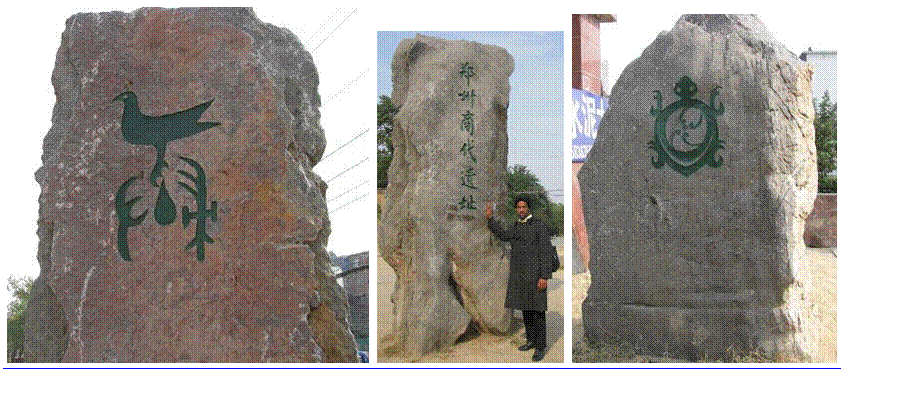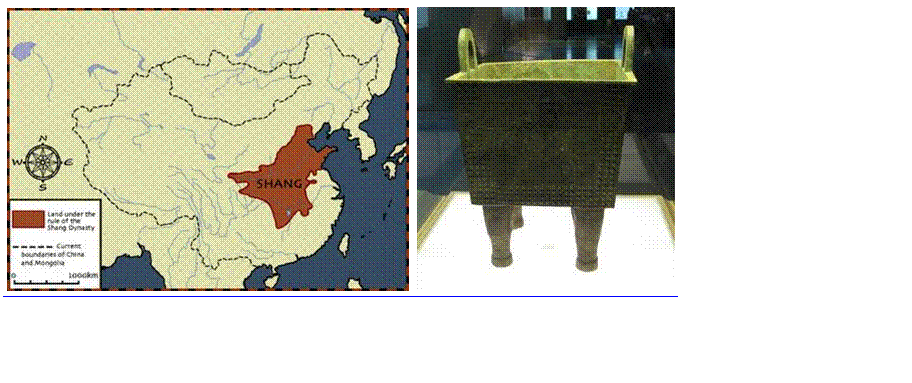Barbados China Friendship Association (BCFA)Chinese Embassy in Barbados—Link : - http://bb.china-embassy.org/eng/Visit to the Shang Dynasty Relics IN CHINA
Shang Dynasty The Shang Dynasty is part of the "The Yellow River Civilization" - (1766 - 1122 B.C.E.) The Relics of Shang Dynasty is located in the suburb of Zhengzhou, a city of Henan Province. The area is the ancient city of Zhengzhou. In 1961, it became one of the important preservations of cultural relics of the State. Archaeologists determined that this ancient site is about 3,500 years old, and is from the early Shang Dynasty (1401~1122B.C.), it was an important discovery. The area is about 25 square kilo miles and the city is in the center of the relic. The city is rectangle and 7 kilo miles long. Today, the highest portion of the remained city is 5 meters and a 32 meters wall.
SHANG RELICS
The Shang Dynasty (Chinese: 商朝; pinyin: shāng cháo) or Yin Dynasty (殷代; pinyin: yīn dài) was, according to traditional sources, the second Chinese dynasty, after the Xia. They ruled in the northeastern regions of the area known as "China proper" in the Yellow River valley. According to the chronology based upon calculations by Liu Xin, the Shang ruled between 1766 BC and 1122 BC, but according to the chronology based upon the Bamboo Annals, they ruled between 1556 BC and 1046 BC. The results of the Xia Shang Zhou Chronology Project place them between 1600 BC and 1046 BC. According to historical tradition, the Shang Dynasty followed the Xia Dynasty and preceded the Zhou Dynasty.
While some direct information about the Shang Dynasty comes from Shang-era inscriptions on bronze artifacts, most comes from oracle bones – turtle shells, cattle scapulae, or other bones, which bear glyphs that form the first significant corpus of recorded Chinese characters. Other sources on the Shang come from historical records of the later Zhou Dynasty and the Han Dynasty Shiji, or Records of the Grand Historian, by Sima Qian. The inscriptions on the oracle bones are divinations, and because they can be gleaned for information on many topics from the politics and economy to the art and medicine of the period, they provide critical insight into the early stages of Chinese civilization.
One site of the Shang capitals, later historically called the Ruins of Yin (殷墟), is near modern day Anyang. Tens of thousands of bronze, jade, stone, bone, and ceramic artifacts have been obtained. The workmanship on the bronzes attests to a high level of civilization. In terms of inscribed oracle bones alone, more than 20,000 were discovered in the initial scientific excavations during the 1920s and 1930s, and over four times as many have been found since.
|



